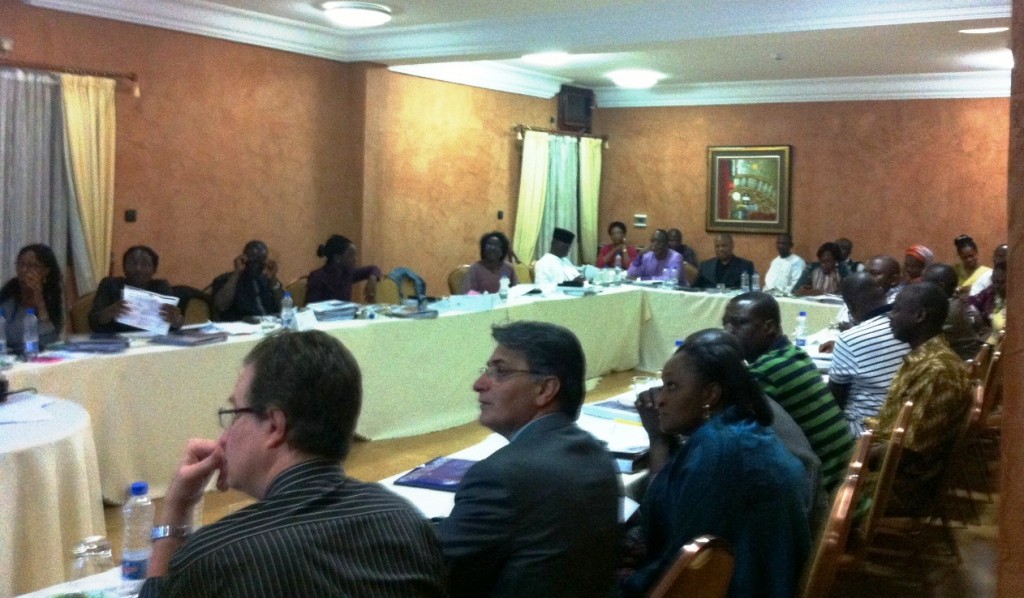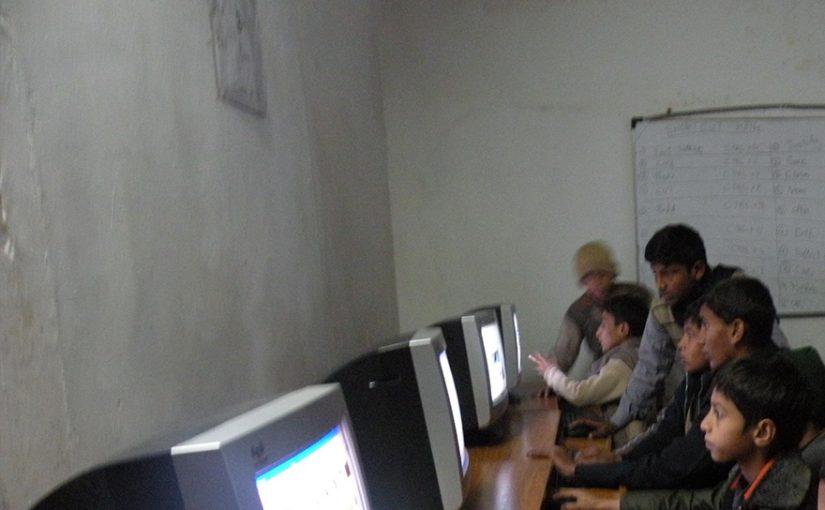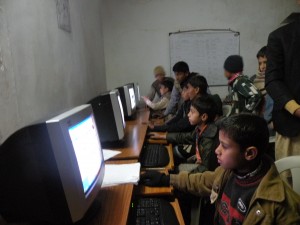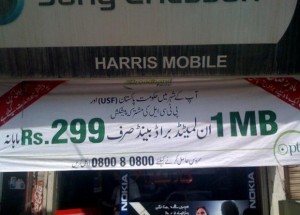Mr. Parvez Iftikhar is CEO of Universal Service Fund since May 2007 (when USF actually started). He is a telecom professional with 30 years of experience.
Starting from scratch, Mr. Iftikhar made it happen for USF to assign contracts worth millions of dollars with Telecom Service Providers in the very first year. The achievement should be seen in the context of strict, open, transparent bidding process that is being followed and the fact that there have been no complaints so far. His particular role in USF Pakistan is getting global recognition!
Prior to USF, he headed Telecom Division of Siemens Pakistan and was responsible for taking it from a Euro 25 million enterprise to one with annual turnover of more than Euro 300 million.
He is an engineering graduate from University of Engineering and Technology, Lahore/Pakistan, who has also been on sabbaticals to Carnegie Mellon University, Pittsburg/USA and Oxford University, UK.
He was kind enough to give us the opportunity to know about USF and its operations.
Text of Interview:
ProPakistani.com: Many people do not understand the concept of Universal Services Fund. Please tell us about its functionality, aspects and goals?
Parvez Iftikhar: The idea of Universal Service fund was foreseen in 1996 with Telecom Act in order to facilitate every citizen of Pakistan with basic telecom services; for the purpose, it was concluded, like several other countries, to establish a fund which will assist operators setting up telecom infrastructure in those areas of the country where it is economically not viable for them to lay down their network. The concept was taken along and eventually USF policy was formulized in 2004 and then the rules in 2006.
Now given that, there is a fund the question arose of how to disburse it and it was decided that a corporate model in Public-Private-Partnership will be established to execute and monitor the fund. Hence a company was formed in early 2007 under the Companies’ Ordinance of 1984, which is called Universal Service Fund. This company is operating under the defined law and it has its own board of directors, evenly distributed between public and private sectors that includes Minister IT, secretary IT, Member Telecom and Chairman PTA representing the government sector; while from private sector there is a representative each from cellular industry, fixed line industry, internet service providers and consumer interest groups as board members plus the CEO as ninth board member.
About its functionality, USF has primarily three tracks to work on: 1 – Rural Telecommunication, 2 – Broadband Internet and 3 – Special projects. Under Rural Telecommunication tag, we are trying to extend telecom infrastructure to those areas where telecom Operators normally don’t go, due to low return or unviable economic conditions in such areas.
Another track is Broadband internet, under which we are encouraging ISPs to provide broadband to un-served urban areas and in future we will stretch this to rural areas as well.
Under special projects, we are going to fund laying of optic fiber cable to each and every Tehsil of Pakistan. It merits mentioning here that 30 percent of Pakistani Tehsils are not linked with Fiber Optic.
Other than this, a small project for ICT labs for disabled in all the four provinces is also being funded.
ProPakistani.com: Where do the funds come from?
Parvez Iftikhar: cellular operators contribute share 1.5 percent of adjusted revenues for USF. Other than this, spectrum auction fee, a portion of APC, government grants plus foreign assistance are permissible other funding sources for USF.
ProPakistani.com: What is the process of starting a new project, and how the funds are distributed to companies to roll out network?
Parvez Iftikhar: First thing, all these projects are deployed by licensed operators, meaning that they will setup the infrastructure, operate it, market it and lastly they will sell the services. USF actually subsidizes these projects by identifying the un-served parts of Pakistan. The level of subsidy is determined by bidding from operators for a specific and predefined area or region. Operators submit their technical solutions (on how they will roll out the infrastructure) as well as financial bids (meaning that the financial expense they would like USF to bear). Once, the technical ability of operator is satisfied, the bidder asking for lowest subsidy gets the project and starts rolling out its infrastructure.
It must be noted, that as per rules it is a must to maintain network quality as anywhere else in the country.
Furthermore, Operators are to bear operating expenses by themselves and they charge their customers as normal tariffs which obviously go into their pocket.
So the USF fund is to only subsidize the network rollout cost in order to take the telecom services to areas where companies don’t go in normal circumstances.
I must also point out that to avoid local monopolies, it is mandatory for project winner to share its infrastructure with at least one other operator. Also as per Rules, a single operator cannot be allotted more than 50% of the disbursed subsidy, to keep the process equitable, fair and competitive.
ProPakistani.com: What is the estimated amount of total fund generated each year and how it is allotted for projects?
Parvez Iftikhar: This year I suppose we are getting 4 Billion rupees in USF, most out of which are from 1.5 percent revenue share of operators.
By the way, this fund is not with us, the Government keeps it, IT ministry to be specific. We try to keep all the process transparent and keep it available on our website www.usf.org.pk, where we not only disclose project’s geographical details but financial details as well. Following the transparent process, we select the successful bidder through open bidding. Successful bidder gets approved from the board of directors to be allotted with the specific amount of fund, required for the project. USF Co. then gets the necessary amounts from the Fund and disburses it.
ProPakistani.com: After successful bidding, what measures and metrics do you have to monitor the quality and speed of network roll out by operators?
Parvez Iftikhar: We do technical audits for the purpose to check the rollout process for this we have independent technical auditors appointed to monitor all the way from start to the completion of project.
Now for each project a technical audit company is there to periodically examine the work being done. Moreover, payments from USF are linked with the reports from technical audit company. We give 20 percent of total subsidized cost at the start of the project, while rest of the payment gets scheduled in 4 installments. These installments are released only after successful completion (of course after an okay signal from Audit Company) of the 25 percent milestone of project.
By the way, we hired these technical audit companies also by publicly advertising the opportunity and after a procedural way to assess their technical strengths and resources which include software and other tools, vehicles, technical staff etc.
ProPakistani.com: How USF foresees the challenge and prospect for broadband rollout in the country?
Parvez Iftikhar: I personally feel like whole of Pakistan is under-served when it comes to broadband internet. Initially, we thought of starting a broadband project throughout the country. But the idea didn’t get positive feedback from some important players in the industry, especially the currently operating ISPs. So after consultation with industry, we decided to go to un-served urban areas, where there is a potential but no broadband service.
To be factual, there are 500 towns of different sizes in Pakistan, out of which 20 or 22 towns have broadband, all others are waiting for broadband services.
We eventually got the whole Pakistan surveyed, and it was concluded that USF will start broadband projects from Faisalabad Telecom Regions (FTR). It would be interesting for you to know that there are 150,000 dial-up internet users in 56 towns of 7 districts of Faisalabad Region, minus the city of Faisalabad City.
The bidding for broadband was on achievement of targets, not the roll-out. Here target means, broadband users, and USF will pay on per broadband user basis – the amount per user decided by open bidding.
I want to mention that we have made it obligatory for successful bidders to setup a computer lab with free broadband connection for one year and training to 2 staff members in every high-school and college in the region. So this way, 285 high schools and colleges in FTR will get equipped with computer labs and the broadband internet connection. Furthermore, we have asked them to set up and run community broadband centers for those inhabitants of each town who cannot afford PCs etc. – though users will pay for services, but they will get fax, printer, scanner and broadband services there, for sure.
ProPakistani.com: What you consider important, voice services or the broadband Internet?
Parvez Iftikhar: Our first priority is of course the Rural Telecom – reason is that those areas don’t have any source of communication medium. So we want such regions on board where population density is so less, conditions are so harsh and accessibility is so difficult, that it is extremely difficult for the operators to go there.
ProPakistani.com: How do you tackle security concerns in Swat, Shangla, Chitral etc?
Parvez Iftikhar: Yes, we have an issue of security there. Project has been halted there because of two reasons, in some areas due to security and in others due to harsh weather conditions. So as soon as the weather will get normal, we will continue with our project in some of the areas, however, in other areas we will have to wait for the security issues to get settled.
ProPakistani.com: As I understand USF is grabbing opportunities to make telecom as not only service in rural areas, but as fiber optic to boom the technology. Can we expect USF to subsidize a mobile manufacturing plant in Pakistan in future to reap from handset industry?
Parvez Iftikhar: Currently, we don’t have such a project under consideration, neither anyone has approached us to work on this track. However, I don’t foreclose the possibility, under the heading of special projects at USF.
I believe, yes, it can be done as far as the country and telecom sector is benefited, I am sure board members will positively consider such an opportunity. It would be better if such a project comes to us via one or more operators, as primarily this is an operators’ fund.
ProPakistani.com: There is an perception in cellular industry, that they are paying huge license fee, and then taxes, then APC and what not – and after all this, they are made to pay 1.5 percent of their revenues, aren’t they over burdened due to USF?
Parvez Iftikhar: I would respond this question in another way; in fact cellular companies should be happy due to such a low amount of contribution for USF when compared to many other countries where cellular operators are charged higher percentage, to be true, mostly it is in the range of 5 to 6% of their revenues. So I find this 1.5% level of contribution very reasonable and necessary to cut down digital divide in the country.
ProPakistani.com: How do you see USF Pakistan when compared to regional and global scenario?
Parvez Iftikhar: I would not like to indulge in any self-praise but thank God; we are doing much better than most of the countries. For example in India, they have a couple of billion dollars accumulated fund – out of what they installed one radio telephone unit per village in 180,000 destinations. While we make sure that at least 60 percent of population in a village or town gets the possibility to get a telephone connection instead of one telephone set per town. Other than this they are installing thousands of Towers so that the operators come and offer service. One has to wait and see how successful that is. They also have intentions to go with broadband projects, while we are already there.
We are certainly ahead.
I was recently invited to speak on Pakistan’s USF model in Vietnam, Malaysia and India. GSM Association has also acknowledged Pakistan’s USF project as a model for others.
ProPakistani.com: What are the challenges ahead of us?
Parvez Iftikhar: Biggest challenge I see is to maintain transparency; then there is a challenge of building consensus between different operators because every operator has its own interests and perspective, so it is important that we take everybody along and work in hands for the betterment.
Technically, we see that different technologies, meaning that CDMA, GSM, Wired or Wireless sometimes conflicting with each other. As we are technology independent (meaning that we don’t ask for any specific technology to be deployed, instead we just want a specific area to be covered with whatever technology), so it gets hard to take in to account the pros or cons for different technologies.
Lastly, as we are a company, handling money of the people of Pakistan, so there are several things which have to be approved by the government, which sometimes slows downs the process – this is good in way, but it hinders the tempo at times.
ProPakistani.com: Let’s talk about Telecom industry in specific beyond USF, how do you see the market?
Parvez Iftikhar: At the moment, as we know all markets are under some kind of pressure mainly due to two reasons, 1 – global financial crisis 2 – war of terror (so-called). Because of these two things, we are for sure undergoing some hard time. But I am sure, before the end of this year, things will start settling down. I see things getting better, InshAllah.
So as soon as market will get to its normal level, telecom sector will be the first beneficiary, because of its nature and then due to emergence of new technologies, such as Broadband and 3G. I see lot of investment coming in. This will have to flourish…!
ProPakistani.com: Thank You very Much!











